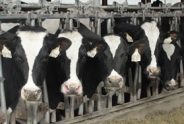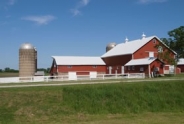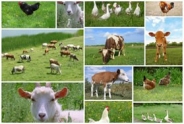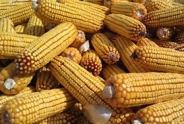Key puzzle pieces that impact first-lactation milk production- Progressive Dairy
Key puzzle pieces that impact first-lactation milk production- Progressive Dairy
To access original content click here
When building a puzzle, many people start with the corners and put together the frame first. This process is exciting. You're starting something new and seeing the scope of the finished product.
However, after building the frame, piecing together the middle can feel laborious and monotonous. It's easy to walk away from the project and forget about it for days, weeks or even months. When you come back to it, it always seems that at least one piece has gone missing. Even when a puzzle is missing just one piece, it looks incomplete and will never live up to its potential.
Dairy producers should be careful the same thing doesn't happen to heifers.
Raising heifers can feel a lot like building a puzzle. New life on the farm is exciting and the pre-weaning piece of a heifer's life could easily be viewed as the frame for her first-lactation milk production. Rightfully so, producers often give a lot of attention to pre-weaned heifer performance.
Once heifers are weaned and move into the grower phase, they get considerably less attention. While it's true growing heifers don't need as much attention, this phase still contains a lot of important pieces. Pre-pubertal growth rate and weight and age at freshening get little or no attention despite the impacts they are known to have on first-lactation milk production.
Focus on the following key puzzle pieces to ensure that when a heifer walks into the parlor she isn't missing that last piece.
The pre-weaning piece
It should come as no surprise that the pre-weaning stage of a heifer's life has a big impact on first-lactation milk production. After all, most producers are aware of research from Cornell University showing that, for every 1 pound of pre-weaning average daily gain, heifers produced 850 to 1,113 pounds more milk during their first lactation. Similar results were found in studies from Penn State University and the University of Minnesota.
However, positively impacting first-lactation milk production goes beyond simply feeding more milk to maximize pre-weaning growth rate. In fact, the studies from Penn State University and the University of Minnesota discussed large amounts of variation in the observed responses. They pointed out that even though pre-weaning growth rate was a significant predictor, a vast majority of the first-lactation milk production response could not be explained by pre-weaning growth rate. This means many factors - in addition to pre-weaning growth rate - impact first-lactation milk production.
What better place to start than colostrum? The importance of good colostrum management is often one of the first topics to come up in conversation among producers, nutritionists and veterinarians. Recent research from Poland has shown that heifers fed high-quality maternal colostrum with initial serum total protein greater than 6 grams per deciliter produced about 3,427 pounds more milk in their first lactation than those with lower initial serum total protein.
One of the many reasons for this observed response is likely tied to improved health of calves with increased serum total protein. Healthy calves would be expected to produce more milk in their first lactation. Researchers from Penn State University confirmed these expectations. Their research showed that as the number of days a heifer spent ill increased, her first-lactation milk production decreased. This research also stresses the importance of treating sick animals quickly and appropriately to minimize their days spent ill.
Starter grain intake is another factor within this phase of a heifer's life that deserves mentioning. While the Cornell University study did not evaluate the impact of starter intake, the other aforementioned studies did, and they all found it to be positively associated with first-lactation milk production. One study from Penn State University showed starter intake had the greatest positive effect on first-lactation milk production. The other Penn State University study showed the predicted milk response more than doubled when starter intake was included in the model. This demonstrates that first-lactation milk production is more greatly impacted when heifers have improved growth from consuming both milk and starter as opposed to improved growth from milk alone.
The pre-pubertal piece
The pre-pubertal stage of a heifer's life is roughly defined as 4 to 10 months of age (or from the time shortly after weaning to puberty onset). Generally, heifers of this age don't require much attention. As such, they often go unnoticed, and producers may be unknowingly impacting first-lactation milk production. A meta-analysis conducted by Penn State University found that growing heifers from 1.8 to 2 pounds per day during this period maximized first-lactation milk production. This is likely due to the impacts growth rate has on mammary development during this piece of a heifer's life. Growth rate after puberty has not been shown to significantly impact milk production. The goal then should be to grow heifers at a rate necessary for them to accomplish target bodyweight and age at freshening, which brings us to the next piece.
The freshening piece
The freshening stage of a heifer's life is largely impacted by bodyweight and age at freshening. It has been established for quite some time that heifers should be 85% mature bodyweight and 22 to 24 months of age at freshening. Most producers are likely familiar with these targets and should be working toward them, although there has been some recent pushback.
Recent research indicates body condition may impact heifer performance in addition to bodyweight at calving. Research conducted by the University of Florida and Penn State University concluded that heifers should be 73% to 77% of their mature bodyweight at calving. They came to this conclusion because heavier heifers in their dataset did not last in the herd as long and, therefore, gave up lifetime milk. The heaviest heifers also experienced the greatest amount of post-freshening bodyweight loss. This may indicate the reason heavier heifers did not perform as well is because they were overconditioned. Producers should continue targeting 85% mature bodyweight, while keeping an eye on body condition to dial in first-lactation milk production and longevity.
Considerable research continues to show that freshening heifers at 22 to 24 months of age is the economic sweet spot. It gets expensive to leave heifers on feed past 24 months. Although the reasons aren't yet clear, heifers freshened prior to 22 months don't produce as well, even when they hit target bodyweights. There simply appears to be a physiological limit to how early heifers can be freshened and still perform at peak levels.
Completing the puzzle
At this point, it should be readily apparent that many puzzle pieces in the heifer growing process impact first-lactation milk production. A lot happens in the life of a heifer before she freshens, and producers may be capping their potential if they don't carefully consider each piece of the growing process. A jigsaw puzzle isn't completed until the last piece is put in place. Likewise, all the pieces of the heifer growing process must be put in place and properly executed to optimize first-lactation milk production.
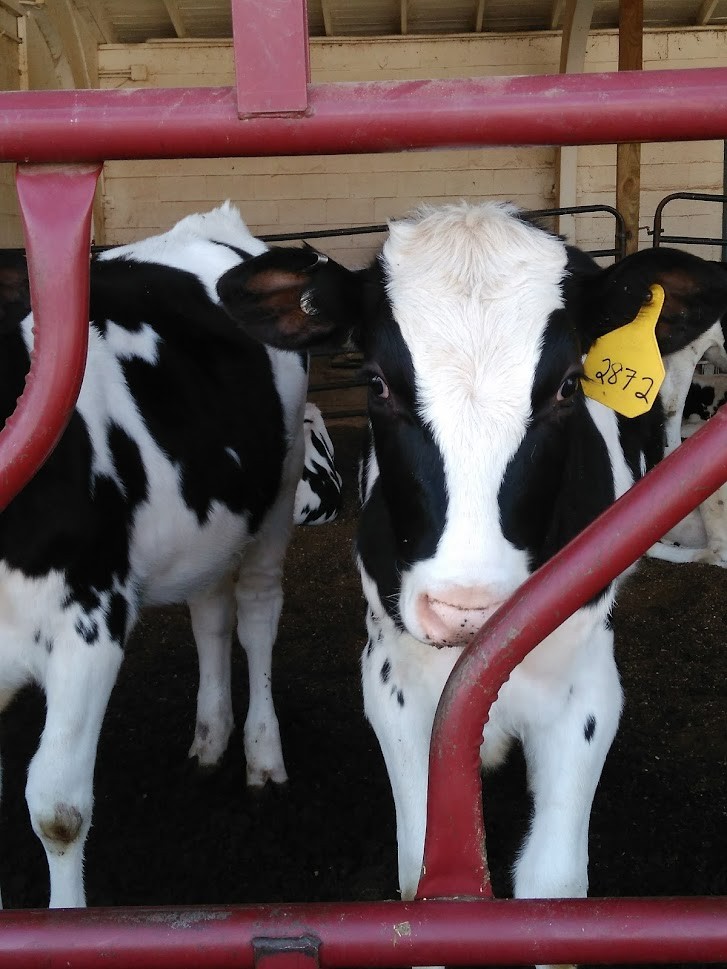
Upcoming Events
Crops, Cows & Critters - Southwest New York Dairy, Livestock & Field Crops Newsletter Sponsorship
December 19, 2025
Our two forms of publications feature research-based and timely information from our four specialists, listed to the right, along with local event notifications and Cornell University outreach. This information is provided to participants who range from dairy, livestock, and field crops producers to agricultural suppliers and consultants.
Weekly Email Update: Shared with 625+ households who have signed up with our program.
Monthly Paper Mailer: To reach our stakeholders and farmers who lack internet access, we send out a monthly mailer where your company's logo and contact information would be featured with a mailing list of 330+ households.
If you sponsor our weekly and monthly publications you reach approximately 955 households.
Visit our website to view our newsletters!
2025 Cornell Food Beverage & Animal Feed Manufacturer Survey
December 19, 2025
Industry and Educational Advocates for New York State's Food, Beverage, and Animal Feed Manufacturing industries:
As you know, NYS has a diverse food and beverage manufacturing industry, in both the types of industries that exist and the wide distribution of firms by scale. Many manufacturing firms have strong backward linkages to agricultural production sectors in the state that support both farm-level and downstream food industry firms and consumers. In collaboration with the New York State Department of Agriculture and Markets, a team from Cornell University's Charles H. Dyson School of Applied Economics and Management has recently rolled out the 2025 New York State Food, Beverage, and Animal Feed Manufacturer Survey. The industry will benefit from an updated assessment of the industry that informs private and public investments and opportunities to support firm growth and improved profitability.
Cornell Organic Field Crops & Dairy Conference
March 6, 2026
Waterloo, NY
Farmers, researchers, educators, and agricultural service providers from across the Northeast are invited to the 2026 Cornell Organic Field Crops & Dairy Conference, held Friday, March 6, 2026, from 8:00 a.m. to 4:30 p.m. at the Lux Hotel & Conference Center in Waterloo, N.Y.
Co-hosted by New York Soil Health and Cornell CALS, the annual conference brings together leaders in organic grain, dairy, and livestock systems to share practical tools, new research, and farmer-tested strategies to support resilient and profitable organic production.
Announcements
No announcements at this time.


